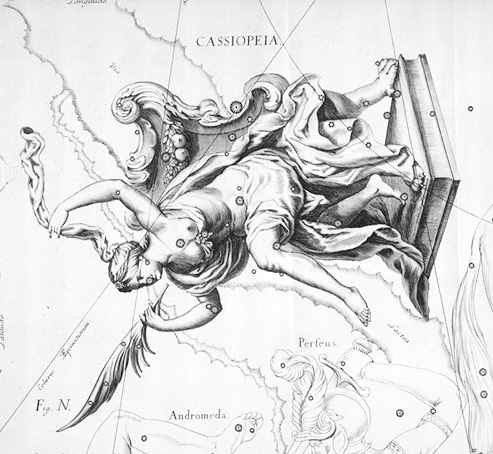Tuesday, January 31, 2012
Monday, January 23, 2012
Monday, January 16, 2012
Women's Hiking Group - Jan 17th & 19th
Aldrich Park (Ridgefield) on New Road, 0.3 mile east of intersection with Farmingville, Road.
Meet at 9:30am in the parking area.
Wednesday, January 11, 2012
Women's Hiking - Jan 10th & 12th
Take 84 to the Airport Exit.Take a right at the light at end of ramp.Follow road to stop sign and make sharp right turn onto Southern Blvd.Stay on Southern Blvd.
There will be signs for Tarrywile Park.
Follow signs and make a right to Tarrywile.
Immaculate H.S. will be on the left and the parking lot for Tarrywile will be on the right side.
Meet at 9:30am.
Wednesday, January 4, 2012
Jan, 2012 Constellation of the Month: Perseus

Last month's constellation, Cassiopeia - the "W", is almost directly overhead around 6 PM. If you look slightly south and east of this W, you'll find Perseus. It is shaped like a wishbone which points at Cassiopeia. The band of the Milky Way runs from Cassiopeia through Perseus. (See last month's Constellation of the Month post on this blog for more on the band of the Milky Way).
Perseus's brightest star, Algol, is actually 3 stars. Two revolve around each other (actually around a point in between them) and the 3rd moves along a large elliptical path outside the other two. More than half the stars in our Milky Way galaxy are multiple stars -- doubles, triples, sextuples, etc.
Algol is also a variable star -- which are much less common than multiple stars. About every 3 days, Algol's brightness drops by about 70%. This occurs when the larger, but fainter, star passes in front (as viewed from the Earth) of the brighter star. In addition to eclipsing variables like Algol, other variable stars are caused by pulsing -- a star actually expands and shrinks periodically. The brightness of some variable stars can vary by a factor or 1,000 or more in a period of less than a year.
Perseus is also home to M 34 -- an open cluster of about 400 stars, which is easily seen with binoculars. An open cluster is a group of stars which were formed from the same nebula (huge cloud of gasses) at roughly the same time -- about 200 million years ago for M34. This is very young as stars go; the Sun is about 5 billion years old. M34 appears to cover an area in the sky about the size of the full moon. It's about 7 light years across, and about 1,500 light years away. A light year is about 6 trillion miles, which is the distance light travels in one year. So, when you're looking at this cluster, you're actually seeing it as it was 1,500 years ago.
For the mythological soap-opera in which Perseus plays a role, scroll down to see Donna's post on Cassiopeia's Story.
Tuesday, January 3, 2012
Women's Hiking: Jan 3 & 5th
Located on the south side of 35 between Mead Street and Bouton Road in South Salem.
Meet at 9:30am.
Monday, January 2, 2012
Cassiopeia's Story - The W in the Sky
 Constellations have been the GPS for travelers throughout history. To make them easier to remember, often stories were told about them. Sometimes the story involved multiple constellations. In Cassiopeia’s case, beside herself, five other constellations are involved – Cepheus, Andromeda, Cetus, Perseus, & Pegasus – at least in this version.
Constellations have been the GPS for travelers throughout history. To make them easier to remember, often stories were told about them. Sometimes the story involved multiple constellations. In Cassiopeia’s case, beside herself, five other constellations are involved – Cepheus, Andromeda, Cetus, Perseus, & Pegasus – at least in this version.Cassiopeia was the vain wife of King Cepheus of Ethiopia. (They are the only husband and wife among the constellations.) Together they had a daughter Andromeda. One day, Cassiopeia boasted she was more beautiful than the sea nymphs. The sea nymphs, who were goddesses, were outraged. One of them, Amphitrite appealed to her husband Poseidon, God of the Sea, to punish Cassiopeia for her vanity. Poseidon sent a sea monster Cetus to destroy Ethiopia. With his kingdom in peril, Cepheus consulted an oracle for advice. He was told the only way to save his realm was to sacrifice Andromeda to Cetus. Reluctantly, he had his poor daughter chained to a seaside rock. Just as Cetus was about to eat her, he felt a sharp pain in his back. He turned and there was the hero Perseus atop the winged-horse Pegasus, sword in hand. The battle between monster and hero raged until Perseus who had just returned from slaying the snake-headed Medusa dragged her head out of a sack. One look at Medusa’s face turns living creatures to stone. Cetus looked and was immediately solidified. Smitten, Perseus claimed Andromeda for his bride and took her home. While the gods made constellations of them all, the arrogant Cassiopeia was condemned to circle the star Polaris forever in her throne. This results in her hanging upside down in an undignified position for half the year. But even then, she is fussing with her hair.



